A journey of a thousand miles must begin with a single step. — Lao-tzu
1.1 Creation
Creation of the Universe has been a popular theme with philosophies and so also with Vedic Astrology.Parasara[1] teaches that the entire manifested[2] Universe is but one-eighth portion of the body of Narayana[3]. The size of the unmanifested Narayana is infinite and just like dividing infinity by any number the quotient is still infinity, so also the size of the manifested potion of Narayana is infinite[4]. Essentially, the absolute Narayana is Nirguna[5] but as a part of His pleasure[6], does attain the three Guna[7] due to Yoga (union) with the three kinds of Shakti[8].
The whole body of Narayana is divided into four parts called (1) Param-Brahmä, (2) Maha-Vishnu, (3) Sada-Shiva and (4) Vasudeva. These parts cannot really be differentiated from the whole as the pure nectar pervades them and the names used here are merely to aid understanding. Thus, Narayana with Sri[9] Shakti is called Maha-Vishnu and is of pure[10] Satwa Guna; Narayana with Bhu[11] Shakti is Param-Brahmä and is of pure Rajas Guna; while Narayana with Nila[12] Shakti is Sada-Shiva and is of pure Tamas Guna. These three parts are full of nectar and are imperceptible. The fourth part of Narayana is Vasudeva. This quarter is further divided into two parts – one part that is perceptible (with three Shakti i.e. Sri-Shakti, Bhu-Shakti & Nila-Shakti and three Guna’s intermingling) and the other part that is imperceptible (with two Shakti’s: Sri-Shakti & Bhu-Shakti).
1.2 The Expansion of Vasudeva
The perceptible part of Vasudeva is Karanodakasayi-Vishnu or the principal evolver and the first intention of creation is seen in the evolution of the sixteen principles of material action[13]. Srila Prabhupada[14] opines that many such universes come out of the pores of the skin of Karanodakasayi-Vishnu. This is the first expansion (first Pada) of Vishnu of the three Pada[15] (steps) in which the Lord manifests. Having created the universes Vasudeva/Vishnu enters into them for continuing the process of creation. In the next two-stages/ steps, He is known as Garbhodakasayi Vishnu and Kshirodakasayi Vishnu.
The three-fold division continues into the next level due to the expansion of this perceptible part of Vasudeva with the motive of entering into each universe. Vasudeva takes the form of Garbhodakasayi Vishnu lying within the half of the universe, which is full with the water of His perspiration from the pangs of multiple births. Vasudeva (Garbhodakasayi Vishnu) with Neela Shakti (Tamas) evolves as the Shankarshana; with Bhu Shakti He expands into Pradyumna (Rajas) and with Sri Shakti He evolves as Aniruddha (Satwa Guna)[16]. There is an intermingling of the Guna’s (modes of nature), and the prevailing modes shall dominate the nature of the expansion.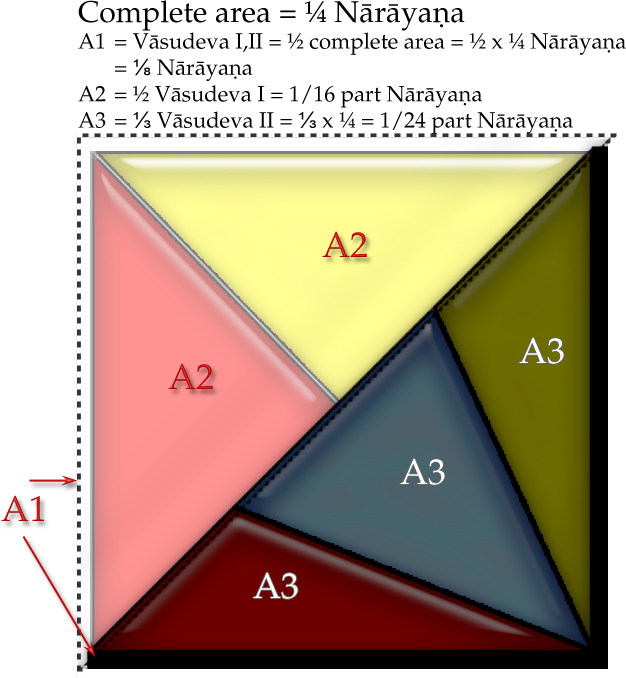
The expansions of Sankarshana (Neela Shakti – Tamas) further evolve into the Maha Tatwa (the primordial five states of physical existence) while those of Pradyumna (Bhu Shakti – Rajas) evolve into Ahamkara (individual ego) and Aniruddha (Sri Shakti – Satwa) evolves into the demiurge Brahma (Ahamkara murti). This is conceived as the stem of the lotus (akin to the umbilical chord) growing out of the navel of Garbhodakasayi Vishnu (as Aniruddha). The stem has a thousand petal lotus as its apex (like the Sahasrara Chakra – thousand petal Chakra in the cranium) on which resided Brahma. The stem has been equated to the three Loka (planes of existence) or to fourteen Loka depending on the context. Such brilliant imagery helps to clear many a misconception. For example there is this never ending debate about the correct time of birth – as to (a) whether it is the Garbha pravesha or coming out of the uterus, (b) Nadi sodhana – cutting of the umbilicus or (c) Prathama rodana – first cry? If we were to accept this imagery of Brahma on the umbilicus of Garbhodakasayi Vishnu as symbolizing birth, then it is time of cutting of the umbilical chord, which is the correct birth moment.
Ahamkara born of predominant Rajas further evolves into three parts based on the Guna’s. A more Satvic expansion (born from Satwa or goodness) is into a Deva; Rajasik expansion (born from Rajas or Passion) is unto the Indriya’s {five Gyanendriya or senses related to knowledge (1) smell, (2) taste, (3) sight (4) hear and (5) touch or feel and five Karmendriya or five primary actions (1) speech, (2) grasping, (3) walking, (4) evacuation/cleansing and (5) procreation}; and the Tamasik expansion (born of Tamas or ignorance) is into Pancha Bhoota (five states of physical existence) called (1) Agni – fire/energy (2) Prithvi – earth/solid (3) Jala – water/liquid (4) Vayu – wind/gas and (5) Akash – ether/vacuum. The Dhi (Supreme intelligence of Vasudeva) enters the process of creation through Ahamkara and besides the creation of the Tanmatra {five subtle elements – (1) Energy – Agni (2) Solid – Prithvi (3) Liquid – Jala (4) Gas – Vayu and (5) Akash – Vacuum in the physical sense but an ethereal substance in the metaphysical sense} and the Indriya as indicated, also creates the Mana (Mind or consciousness). All these creations are ‘active’ as they arise with their individual Shakti’s. In fact, Ahamkara itself has been created from the Rajas of Pradyumna and in turn its creations will also exhibit such traits as associating for the purpose of creating active elements and bodies that are principally Rajasik. Thus all creatures and living bodies are created from Ahamkara.

The Vishnu Purana confirms this postulation and adds that the ‘Paramatma’ is the ‘Purusha’ and adds that He is ‘Kaala’ or time (the controller of the sixteen laws of material action). Thus evolved the concept of Kaala Purusha (personification of time as an aspect of God) and the Bha-Chakra (zodiac) as the celestial clock that not only represents the Kaala Purusha but also indicates the quality of time. Kshirodakasayi Vishnu or the Paramatma expands from Vasudeva/Garbhodakasayi Vishnu into the body of Brahma (through the Satvic incarnation Aniruddha) and thereafter enters the body of every living being to reside in the heart (lotus[17]). By a similar process, the Jeevatma (or the individual personal soul) also enters the body and shares a berth next to the Param Atma in the heart. Parasara[18] has opined that the Paramatma resides in all Jeeva’s i.e. all living beings have a portion of the divine spark of Vishnu within their hearts. The potency of this spark of Vishnu is called Paramatma-amsa whereas the potency of his or her own individual soul is called Jeeva-amsa.
Sankhya Shastra has a similar postulation (as taught by Sri Krishna in the Srimad Bhagavat Gita and Kapila Muni an incarnation of Vishnu in the Srimad Bhagavatam) in so far as the expansion of Garbhodakasayi Vishnu is concerned. This teaching is grossly different from the fundamental atheism of the Sankhya Shastra given in the Sankhya Karika of Isvarakrishna attributed to Kapila. Kapila Muni the legendary founder of this system of philosophy[19] gave this knowledge to His mother Devahuti and is different from Kapila Muni as indicated in the Bhagavatam. The principal difference is in the view of the Purusha as being the prime creator (Krishna/Kapila) and just an inactive spectator of the evolution of Prakriti (Isvarakrishna).
The expansion of Vasudeva is based on twenty-five principles (Tatwa). The first principle is [1] the Purusha or Vasudeva the principal evolver Who glances at [2]Prakriti (Shakti – personified as Mother Nature) while lying on the Karana Sagar (causal ocean). The Purusha has three forms[20] as (a) Maha Vishnu or Karanodakasayi Vishnu, (b) Garbhodakasayi Vishnu and (c) Kshirodakasayi Vishnu at the three levels of evolution. At the first level, the exhalation of Karanodakasayi Vishnu produces innumerable universes that start as a seed and expand as they float above the causal ocean. At the second level, Garbhodakasayi Vishnu enters each of these universes and interacts with Prakriti in its three constituent qualities called Guna to produce besides others, [3]Intelligence (Dhi or buddhi called Maha ‘the Great One’). From intelligence is produced [4]Ahamkara (Self consciousness).

Ahamkara interacts with Neela Shakti in the mode of Tamas to produce the Tanmatra (five forms of material existence in the particle form). The Tanmatra or particle forms of physical existence are [5] Akash – Vacuum or ether depending on context, [6] Vayu – Gas, [7] Jala – liquid, [8] Prithvi – Solid, and [9] Agni – Energy. The five forms of gross physical matter called Maha Bhoota was created from these molecular forms. These are also named as the molecular forms (as they are not different from their constituent molecules) as [10] Akash – Vacuum or ether, [11] Vayu – Gas, [12] Jala – liquid, [13] Prithvi – Solid, and [14] Agni – Energy.
Ahamkara interacts with Bhu Shakti in the mode of Rajas to produce the five sense organs called Gyanendriya – [15] hearing, [16] touch, [17] sight, [18] taste and, [19] smell and the five organs of action called Karmendriya – [20] speech, [21] grasping, [22] walking, [23] procreation and, [24] evacuation. Each of these organs and senses correspond to a Tanmatra/Maha Bhoota respectively. The final product of Ahamkara is the Mana (Mind) that interacts with the various Gyanendriya and Karmendriya and is influenced by the Tanmatra and Maha Bhoota i.e. the mind is the link between the senses and organs that are in constant interaction with the molecular and gross material forms.
1.3 Shakti

Shakti is viewed as the principal field of evolution and in that sense is construed as a feminine personality but is viewed as a potency or energy type. Narayana, the Supreme Lord has two types of energies. These are the superior Spiritual energy and the other is the inferior material energy that manifests. The spiritual energy is further classified as internal and marginal. These are called Antaranga Shakti (internal spiritual energy), Tathastha Shakti (marginal spiritual energy) and Bahiranga Shakti (external material energy). Just as light loses its intensity as it goes further from the lamp (bulb source), so also the Antaranga Shakti is viewed as the concentrated effulgence existing within the Lord and is called Para Shakti as it exists only at the Para level. Tathastha Shakti is like the light just outside the lamp (glass cage of the bulb) and is also spiritual in the sense that it does not serve the purpose of making objects visible. The light which is outside the bulb helps us to see objects by reflecting from their surface and in a similar manner the Bahiranga Shakti is the original effulgence, field or potency that is involved in the process of creation.
The Antaranga Shakti (internal spiritual energy) has three attributes. One is called Hladini Shakti and is like Neela Shakti or the pleasure potency and this internal quarter of the Supreme Lord is akin to Sadashiva. The other attribute is called Sandhini Shakti which is like Sri Shakti or the existential potency and this quarter portion of the Supreme lord is Maha Vishnu. The third attribute of the spiritual energy is called Samvit Shakti and is like Bhu Shakti or cognitive potency and this quarter of the Supreme Lord is Param Brahma. Refer Figure-1 where these are schematically shown as the three complete quarters in the imperceptible portion. The Padma Purana refers to these as the Tri-Pada –Vibhuti (three quarters) and provides elaborate details. It adds that the material manifestation is in the Eka-Pada-Vibhuti (one quarter).
The Tathastha Shakti is present in the fourth quarter as the margin or meeting point between the internal Antaranga Shakti and the external Bahiranga Shakti. As mentioned above, this is also spiritual energy and is viewed by Parasara as having two attributes – Sri Shakti and Bhu Shakti. Narayana in His interaction with the Tathastha Shakti is known as Vasudeva and is represented as a half of the fourth quarter in the schematic diagram (Figure-1). This portion is also imperceptible. Vasudeva in His multiple expansions as Kshirodakasayi Vishnu is the Paramatma (Universal soul or Macrocosmic expansion). The name Kshirodakasayi ‘Vishnu’ implies the yoga (union) of Vasudeva and Sri Shakti and indicates the perception of the Paramatma as being of pure Satwa Guna. This is viewed as the pure white light as indicated by the descriptive term Kshirodakasayi[21]. The other Yoga of Vasudeva is with Bhu Shakti and this multiple expansion is called the Jeevatma (Individual spirit soul or Microcosmic expansion). These are like the various colors of visible light as well as the invisible ‘dark’ ultraviolet. Just as the diffracted light colors are like the original white light in every possible sense except the breadth of their spectrum, so also the Jeevatma have the potency of the Paramatma but are different in their individual potency.
These Jeevatma or Jeeva’s are like water particles that have acquired excessive energy (‘Rajas’ from Bhu Shakti) to become steam and have left the surface of the boiling water. Having moved away from the surface of the water these tiny water particles acquire various forms in various substances and being to believe in their independent existence in these substances as being different from the water reservoir from where they originated. In a similar manner the Jeevatma dwelling in the material substances begin to believe in their independent existence as different from the Paramatma. The closest contact that any being has with God is the juxtaposition of the Jeevatma and the Paramatma in the heart (lotus).
The external Bahiranga Shakti is present in the other half of the fourth quarter and has Yoga with Vasudeva as Sri, Bhu and Neela Shakti for the process of creation.
Whereas Sri Jiva Gosvami lists twenty Shakti’s in the Bhagavat Sandarbha, Parasara lists forty Shakti’s in two groups of twenty each as the potencies of the spiritual energy. This shall be discussed in a separate volume under Vimsamsa.
1.4 Deva
Most scholars misinterpret the word ‘Deva’ as meaning ‘God’. In reality, there are 33 Deva’s with about 330 million forms. The word is derived from the root Divu that has ten meanings[22] (for a better understanding, refer to the glossary) –
1. Krida – sporting
2. Vijigisha – conquest
3. Vyavahar – occupation/pursuit
4. Dyuti – intellectual inspiration or brilliancy
5. Stuti – praise
6. Moda – pleasure
7. Mada – exhilaration, intoxication
8. Swapna – dream
9. Kanti – splendor
10. Gati – direction, movement
These words define the purpose of a Deva. Jaimini defines Deva or Devata as indicated by the Devata Karaka[23] planet. This is the third in the hierarchy (of spiritual needs) after the Atmakaraka (helps in the determination of the Ista/Isa directing emancipation from the cycle of rebirth) and Amatya Karaka (deity symbolizing sustenance in this world). Thus Deva or Devata is the Guru and guides or illuminates certain inherent abilities that will develop in this life or the spiritual path or that which leads to fulfillment of desires etc. Nirukta[24] defines Deva as that which (a) confers benefits (Danada) (b) illumines (Deepanad) or (c) is the source of such knowledge or illumination (Dyutanad). Thus, translating deva as God is conceptually incorrect. This view is further confirmed without an iota of doubt in the Aitereya Brahmana[25] as well as the Sathapatha Brahmana[26]. The natural question is ‘if Deva’s are not Gods, then who or what are the Deva’s and in what manner are they linked to Jyotish’?
Sathapatha Brahmana 14.16:
Katame te trayastrimshat iti ashtou vasavah; ekadasa Rudra, dwadasa-Adityah ta ekatrimshat; Indraschaiva Prajapatischa trayatrimshaviti.
(We) speak of the thirty three (Deva) of which eight Vasu, eleven Rudra and twelve Aditya add up to thirty one. Indra and Prajapati included bring their number to thirty three.
 1.4.1 Asta Vasava (Eight Vasu’s)
1.4.1 Asta Vasava (Eight Vasu’s)
Sathapatha Brahmana 14.16:
Katame Vasava iti. Agnischa prithivi cha vayusch-antarikshamchaadityascha dyouscha chandramascha nakshatrani chaite Vasava aeteshu hidam sarve vasu hitam aete hidam sarve vasayante taddyudidam sarve vasayante tasmad Vasava iti.
The Sathapatha Brahmana gives the list of eight Vasu as (1) Agni (2) Prithvi (3) Vayu (4) Antariksha (5) Aditya (6) Dyou (7) Chandrama and (8) Nakshetra. Prima facie this may seem a bit contradictory as Aditya has also been mentioned separately but here it refers to the Sun, Chandra refers to the Moon, Nakshetra are the lunar mansions or the constellations and the remaining five represent the states of material existence. These eight form the primary source of enlightenment about the self. They represent the basic variables that define every creation and its original source of illumination in the ten methods defined earlier as the purpose of the deva. The Vishnu Purana makes this more lucid in the definition of the Vasu’s as
- Apa – Jala Tatwa or liquid
- Dhara – Prithvi Tatwa or solid
- Anila – Vayu Tatwa or Gas
- Anala – Agni Tatwa or Energy
- Dhruva – the pole star representing
- Akash Tatwa – the sky or Vacuum and
- fixity of the zodiac i.e. the relevance of Ayanamsa
- Soma – The Moon
- Pratyusha – the recurring dawn representing
- The Sun – as causing the night and day i.e. the source of light behind the dawn,
- Lagna – The ascendant or the point in the eastern horizon as representing the self and is equated to the dawn.
- Prabhasa – splendorous lights of the stars that are grouped into 27/28 Nakshetra (Constellations).
This list is the first principle of Jyotish where the bodies that create all beings as well as guide them through various activities are defined. These include (a) the Sun, (b) the Moon, (c) the constellations called Nakshetra and (d) the Pancha Tatwa or (the guidance/direction from) the five states of existence of all matter and energy. Thus, the luminaries (Sun & Moon), the five planets Mars, Mercury, Jupiter, Venus & Saturn [ruling the five states of energy (Agni), solid (Prithvi), ether (Akash), liquid (Jala) and gas (Vayu) respectively] and the 27 (or 28) lunar mansion called Nakshetra form the first principle. Birth implies creation and this is the Satvic principle of sustenance of the born or created being.
 1.4.2 Ekadasa Rudra
1.4.2 Ekadasa Rudra
Sathapatha Brahmana 14.16:
Katame Rudra iti. Dasheme purushe praanaa atmaikadashah te yadasmat martyaacchreeradtkramanti atha rodanti tad yad rodayanti tasmad Rudra iti.
The eleven Rudra[27] are defined as Deva’s. Ten of these are Rudra are responsible for holding the ‘Prana’ (vital life force or air) within the body that sustains the breathing and life. Thus, their nature is akin to Marut or storm god and in a sense like Vayu (the air element). The eleventh Rudra is Maheswara and is responsible for the Atma (soul). These are called Rudra from the root Rud meaning to weep as their ‘going away’ results in the death of the native and the near and dear ones weep.
These eleven Rudra (including Maheswara) are responsible for the destruction of everything that has been created and form the second principle of Jyotish. In the first stage there is the destruction of the physical body by the ‘going away’ of any of the ten Rudra. Thereafter the Atma (soul) is separated from the Mana (mind) by Maheswara (Shiva) the eleventh Rudra. The two nodes of the Moon called Rahu & Ketu are the destroyers. Rahu has the responsibility of destroying the Luminaries and the signs (Dwadasa Aditya). Ketu destroys the material creation represented by the Pancha Tatwa (in Jyotish the five planets Mars, Mercury, Jupiter, Venus and Saturn) and the Nakshetra. The Rudra can be viewed as the binding forces in any created being, both living and non-living. They symbolize the strength of God and are also the strength of the created being as their going away results in the weakness of the body and it is destroyed.
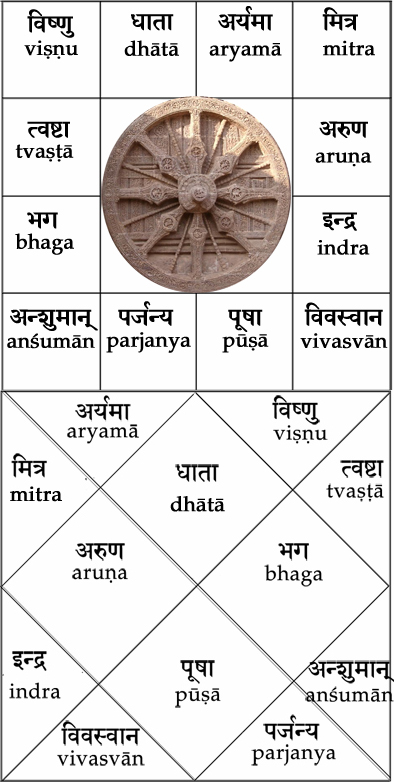 1.4.3 Dwadasa Aditya
1.4.3 Dwadasa Aditya
Sathapatha Brahmana 14.16:
Katame Aditya iti. Dwadasamasah samvatsarasya
Aeta Adityah aete hidam sarvamadadaanayanti taddwididam sarvamadadaana yanti tasmaditya iti.
Dwadasa means twelve and Masa means the month – thus the Dwadasa (twelve) Aditya are the twelve months represented by the twelve signs in the zodiac. The month is variously defined in Jyotish and this specific reference indicates the motion of the during the period between two consecutive conjunctions with the Moon. This is the synodic month and is about 29.5 days, which for convenience is taken as 30 days. Since the average geo-centric motion of the Sun during 30 days is 30 degrees, this defines the Saura Masa (solar month) which is the third principle of Jyotish. Twelve such ’30 degree motions’ result in the Sun returning to its original position and this defines the Samvatsara or ‘solar year’. Thus, the third principle of Jyotish is that of time & space which is defined by the Dwadasa Aditya (twelve signs of the zodiac with the Sun as their overlord). The solar month and solar year are the foundation of Vedic astrology and that further sub-divisions of time are to be determined based on solar motion. The word Samvatsara means ‘year’ and specifically ‘solar year’ as this is based on the Dwadasa Aditya. This knowledge is of vital importance in determining the period of influence of the planets called ‘dasa’. Often astrologers are bogged down with misconceptions about using the solar or lunar year or even other variously defined time periods. This indicates the lack of appreciation of this principle of time & space relationship as defined by the Dwadasa Aditya.
They are called Aditya as they are the distributors of food and all materials required for creation and sustenance (Dana) as well as inspiration, exhilaration, intoxication, sexual vitality and vigor (Mada). The Aditya are the givers and everything comes from them. Thus, the twelve signs represent all the material forms of creation.
1.4.4 Indra & Prajapati
Sathapatha Brahmana 14.16:
Katama Indrah katamah prjapatiriti. stanayitnurevendro yagyah prajapatiriti. Katama eko deva iti sa Brahma tyadityachakshate.
 Stanayitnu means thunder or lightening and refers to the electrical impulses that are used by the brain to control the senses. Thus Indra is the demigod controlling the senses and the working of the brain as well as the intelligence of all creation. Yagyam is the worship or praise for Prajapati the progenitor. This is the fourth principle of Jyotish and is called Lagna or the ascendant representing the seat of Prajapati the progenitor and the ‘praise worthy one’. Indra is seated on the throne of the zodiac indicated by the point in the mid-heaven. This is the area of the tenth house counted from the Lagna or ascendant sign.
Stanayitnu means thunder or lightening and refers to the electrical impulses that are used by the brain to control the senses. Thus Indra is the demigod controlling the senses and the working of the brain as well as the intelligence of all creation. Yagyam is the worship or praise for Prajapati the progenitor. This is the fourth principle of Jyotish and is called Lagna or the ascendant representing the seat of Prajapati the progenitor and the ‘praise worthy one’. Indra is seated on the throne of the zodiac indicated by the point in the mid-heaven. This is the area of the tenth house counted from the Lagna or ascendant sign.
The zodiac at any point of time, is divided into two halves by the line of the horizon. Since the earth rotates from the west to the east, the planets and other stars seem to move in the opposite direction from any stationary point of observation on the earth. The Sun rises in the east in the morning, ascends to mid-heaven (middle of the sky) by mid-day and then starts descending till it sets in the western horizon. Lagna is the point in the eastern horizon that is just about to ascend or rise into the heavens signified by the visible half of the zodiac and is akin to sunrise. This is called the ascendant. Similarly the point in the western horizon which is just about to descend or go under the horizon is called the descendant. The zodiac is divided into two halves called the Drusya (visible) and Adrusya (invisible) by the line of the horizon with the sky in the visible half and the portion below the horizon in the invisible half. The Drusya Rasi or zodiac signs (complete or portions) in the visible half are the heavens called loka whereas the Adrusya Rasi or zodiac signs (complete or portions) in the invisible portion or below the horizon are called hell or Tala. There are two postulates based on (1) material or physical existence and (2) spiritual existence to describe these heavens and hell.

The three material worlds
The physical universe can be classified into three parts called Bhu loka (earth), Bhuva loka (firmament or the solar system which contains the nava graha) and Swarga loka (Sky containing the fixed stars which is the residence of the demi-gods). The geocentric zodiac (Bhu loka as its center) limited to the Bhuva loka is called the Vishnu chakra (Tropical zodiac where the weather and other phenomena of the atmosphere and beyond are experienced). The geocentric zodiac based on the fixed stars in the sky is called the Narayana chakra (Sidereal zodiac). These terms find specific mention in the Vishnu purana. The pious Hindu recited the prayer “Om Bhur-bhuva-svah” every morning for the blessings of this material creation as a prefix to the Gayatri mantra.
The Fourteen spiritual worlds
Thus, there are seven heavens and seven hell. The heavens called loka[28] are in seven parts:
- Visible portion of the Lagna (ascendant sign/house) that has ascended i.e. from the start of the sign to the longitude of the ascendant called Satya loka symbolized by the thousand petal lotus on which rests Prajapati (form of Brahma) the progenitor. This is the seat of the creator and He is praised by all His creation. It shows fame as a consequence of the praise and health and vigor.
- Visible portion of the seventh house/sign that is about to descend or go into the invisible half i.e. from the longitude of the descendant to the end of the sign called Bhu loka (the earthly plane). It shows the death and re-birth as this is also the Mrityu loka or ‘where death occurs’.
- The tenth house/sign (with the mid-heaven as the throne of Indra in it) called Svah or Swarga loka.
- The remaining signs/houses in the visible portion (8th, 9th, 11th & 12th ) are the Bhuva, Maha Gyanah and Tapah loka.
Thus, the seven heavens are Bhu, Bhuva, Svah, Maha, Janah, Tapah & Satya loka[29] and the deities of the planets Mars, Sun, Venus, Mercury, Moon, Saturn and Jupiter respectively, preside over these loka. The seven hell are the seven signs in the invisible portion of the zodiac called Atala, Bitala, Sutala, Talatala, Rasatala, Mahatala and Patala respectively. There are seven Narka (most inferior hells for punishment) below these seven Tala and are all situated at the nadir i.e. the point exactly opposite mid-heaven in the fourth house. The spiritual Hindu recites the mantra “Om Bhur- Om Bhuva – Om svah – Om Maha – Om Gyana – Om Tapah – Om Satyam” everyday as a prefix to the Gayatri mantra aspiring for the highest heavens.
Thus, in any chart, the seventh house is examined for death and rebirth. If death occurs during the period of the planet in the seventh house or its lord, then rebirth is sure to occur. The place of rebirth can be guessed from the planet / sign in the seventh house. If Mars is in the seventh house, then rebirth shall be in an island like Sri Lanka. Others indications can be read from standard texts. It is also for this very reason that Parasara recommends the Mritunjaya Mantra with its prayer for Moksha (emancipation from the cycle of rebirth) during such periods of planets connected with the seventh house. The 12th house or the portion just before the Lagna is the Satya Loka, the highest spiritual point and beyond this is the spiritual region of no-return. By constantly repeating Om Tat Sat and living a truthful life, the worshipper attains Satya Loka and the highest heavens beyond from where there is no return to this Mrityu loka.
Thus, we conclude that the 33 Deva’s are the basic paradigm of Jyotish and that they can also be grouped based on mobility. These groups would include:
- The immobile or stationary stars form the group of 27 (or 28) Nakshetra,
- The space and time divisions form the group of Rasi or Dwadasa Aditya and
- The luminaries (1) Sun & (2) Moon, the Pancha Tatwa controllers (3) Mars, (4) Mercury, (5) Jupiter, (6) Venus & (7) Saturn and the Rudra representatives (8)Rahu & (9)Ketu form the third group of mobile bodies called Graha. Since these are nine in number, they are called Nava Graha. We shall use the forced definition of ‘planets’ to indicate these nine mobile bodies. The Sun is not mobile within the solar system but from a geocentric viewpoint i.e. assuming the earth to be stationary, its movement is translated to be the movement of the Sun.
1.5 Pancha Tattva
The five principal forms of existence of all matter and energy which is the physical manifestation from Tamas are called Pancha Tatwa (lit. Five elements). These five forms of existence are Agni (Energy), Prithvi (Solid), Jala (Liquid), Vayu (Gas) and Akash (Vacuum). Thus every body or physical manifestation in this Universe must exist in one or more of these five principal forms of physical existence. This is a well known principle of Physics and that these forms of existence are mutually convertible i.e. matter and energy can change from one form to another or that the Tatwa are changing from one to another all the time. Gasoline (petrol) is primarily a liquid substance (Jala Tatwa) which is ignited in the engine of a car and is converted to energy (Agni Tatwa) that propels the car. The human being consumes solid food (Prithvi Tatwa) and various liquids (Jala Tatwa) which are digested at various levels and the necessary elements are extracted into the blood especially glucose (the gasoline for the human body). For ignition, the presence of oxygen is necessary and this is drawn from the air (Vayu Tatwa) we breathe. Oxygen also gets dissolved into the blood which is like the engine of the car where the glucose and oxygen meet and are ignited to give energy (Agni Tatwa) to the muscles to work.
The Pancha Tatwa are not Deva’s in their physical manifestation but their ability to guide the life process and course through various forms and manifestations is the Deva. Water for example, is Jala Tatwa and is primarily a physical element (Bhoota) born from Tamas. However, the knowledge that water can quench thirst is a Deva. This difference between the physical element itself and the body of knowledge associated with it should be understood as the difference between the Bhoota and the Deva. In the human body, neither the food nor liquids consumed nor the air we breathe nor the ignition and energy formed are Deva. They are simply the Tatwa or the elements working as per the natural laws.
1.6 Guna
Guna is the state of being of a body (or element composed of the principal forms of existence). It is a measure of the energy level as well as the nature of the motion. If the motion is balanced, then it can continue without resistance for infinite time like the rotation of the planets around the Sun has been going on for ages. Such bodies possess Satwa Guna or the quality of goodness in good measure that causes them to continue in perfect motion for a long time. It is for this reason that Parasara teaches that the planets possess the goodness that causes them to represent the Dasavatar (ten forms of Vishnu – Sustainer, the embodiment of Goodness). Others tend to accelerate with excess energy and then decelerate as the energy level is diminished until they come to a standstill. The process of uneven motion is called Rajas Guna and is a sign of life (Brahma – Creator). The point where the body comes to a standstill or has no motion is called Tamas guna and is a state equated with death (Shiva- Destroyer).
From a heliocentric viewpoint, the planets possess Satwa Guna, but this situation changes from a geocentric view point, where we find the planets accelerating, decelerating and also coming to a standstill. These motions have been studied and various mental attitudes have been attributed to them. For example, a planet that is accelerating and moving very fast is said to be in Bheeta avastha i.e. frightened and is running away.
1.7 Divine Incarnations
From the above it is evident that every aspect of this manifested universe is a part of Vishnu and thus, every being is but an incarnation of God. There are umpteen incarnations of Vishnu as given in the Bhagavat Gita[30], Srimad Bhagavatam[31] and other literature. The Bhagavatam is also the best source for understanding the principles of creation and what has been given here is merely a gist. One of the important teachings of the Bhagavatam is that the different incarnations and forms of God are worshipped by people for attainment of different desires.
Recommended reading
- Brihat Parasara Hora Shastra Vol 1 & 2
- Satapatha Brahmana
- Srimad Bhagavatam
References
[1] BPHS 1.9[2] The manifest is referred to as ‘Maya’ or illusion, and in the Bhagavat Gita is called the Akshara’ (syllable), immutable Brahma. Thus, if Narayana is said to be even above this sound syllable.
[3] Narayana is composed of two words ‘Nara’ meaning ‘any body’ and ‘Ayana’ meaning ‘Goal’. Thus the composite word Narayana means the ultimate goal of every body both living and non-living or mobile and immobile. In a more subtle sense it refers to the individual soul (Microcosm) endeavoring to attain Union (Yoga) with the Universal Soul (Macrocosm). Thus, Narayana also means this universal soul or supreme personality of God.
[4] Poornamada poornamidam poornatapoornamudachyate; poornasya poornamadaya poornamevavasisyate.
[5] Nirguna means untouched by material contamination – [Prabhupada]. Beyond the Guna’s or without Guna.
[6] Bhagavat Gita 9.8
[7] Guna are the material qualities of Prakriti (personified nature) as Satwa (Goodness), Rajas (Passion) and Tamas (Ignorance).
[8] Shakti literally means strength or power and specifically indicates the strength to achieve an objective. The three primary objectives are creation, preservation and dissolution.
[9] Sri Shakti is the phoneme causing Satwa Guna and is personified as Maha-Lakshmi. Satwa Guna is of the nature of Goodness causing preservation.
[10] The word ‘pure’ has been used to indicate the presence of Amrita (nectar) that causes immortality or perceived immortality in a relative time concept.
[11] Bhu Shakti is the phoneme causing Rajas Guna and is personified as Maha-Saraswati. Satwa Guna is of the nature of Passion causing creation.
[12] Nila Shakti is the phoneme causing Tamas Guna and is personified as Maha-Kali. Tamas Guna is of the nature of Ignorance causing destruction.
[13] SB 1.3.1
[14] SB 1.3.1 purport
[15] Trinipada vichakrame Vishnur-gopa adabhya. Atho dharmani dharayen. RV
[16] This postulation of Parasara (BPHS 1.14 –1.17) is corroborated by the Sloka – Om namastubhyam Bhagavate Vasudevaaya dhimahi. Pradyumnayaaya, Aniruddhaaya namah Sankarshanaya cha. In addition we are taught that the intellect ‘Dhi’ evolves with these expansions which in turn, results in the creation of (a) Brahma and the 14 Loka, (b) Ahamkara that creates living beings and (c) Maha Tatwa. These expansions are spontaneous without any time lag.
[17] Ref: Appendix-1 – Heart lotus is the Hridaya Padma or a psychic energy center in the region of the heart.
[18] BPHS 1.21 -24
[19] There are six systems of Philosophy called Shad-Darshan. Refer Appendix-4 for more details.
[20] Laghu Bhagavatamrita, Purva Khanda, 33
[21] Kshira means milk and Kshirodakasayi means sleeping on the ocean of milk thereby referring to the pure white effulgence of the Paramatma.
[22] Dhatupatha
[23] Refer Chapter 8
[24] ibid 7.16
[25] Sloka 1.6 Satyasamhita vai deva
[26] Sloka 3.7.3.10 Vidmanso hi deva
[27] Jaimini has given considerable details on calculating these eleven Rudra (infact ten Rudra and the eleventh he calls Maheswara or Shiva Who is responsible for delivering the soul). These have been discussed in Volume VIII (Ayur Khand – Longevity).
[28] The names of the seven loka as given here are from the Markandeya Purana. Human beings reside in the Bhu loka (earthly plane) while birds, clouds and the demigods reside in the Bhuva loka. The names given for the seven heavens indicated by the seven signs are different in other Vedic literature. However, the names given here are accepted as authentic as Rishi Markandeya was the recipient of the Vedic knowledge from the Maharishi’s through Rishi Chyavan & Daksha Prajapati. He was also the grandfather of Parasara.
[29] The names of the seven loka as given here are from the Markandeya Purana. Human beings reside in the Bhu loka (earthly plane) while birds, clouds and the demigods reside in the Bhuva loka. The names given for the seven heavens indicated by the seven signs are different in other Vedic literature. However, the names given here are accepted as authentic as Rishi Markandeya was the recipient of the Vedic knowledge from the Maharishi’s through Rishi Chyavan & Daksha Prajapati. He was also the grandfather of Parasara.
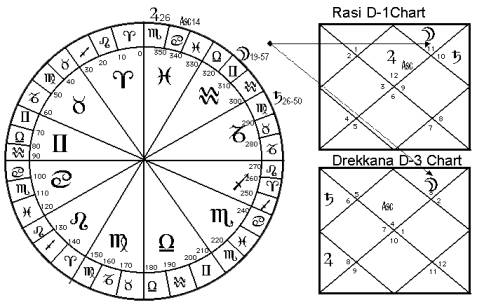



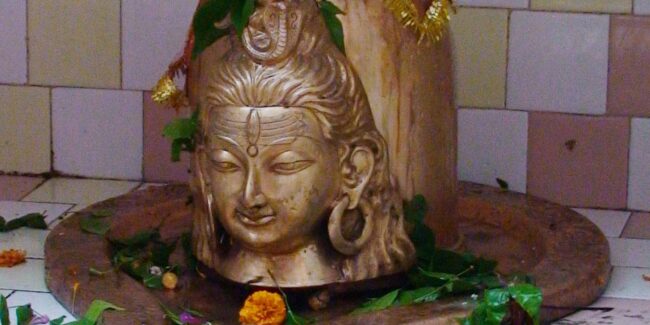
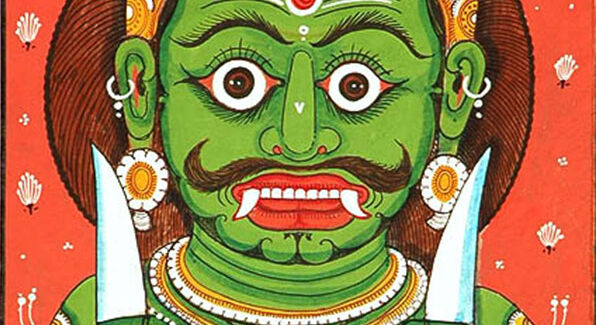
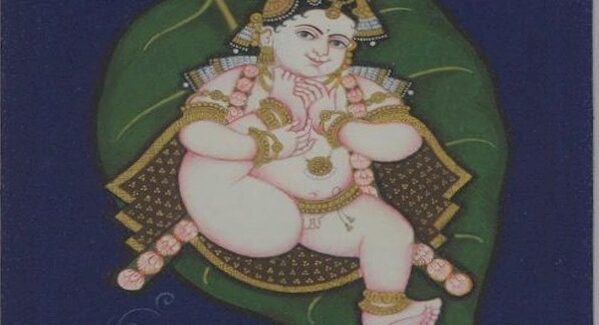
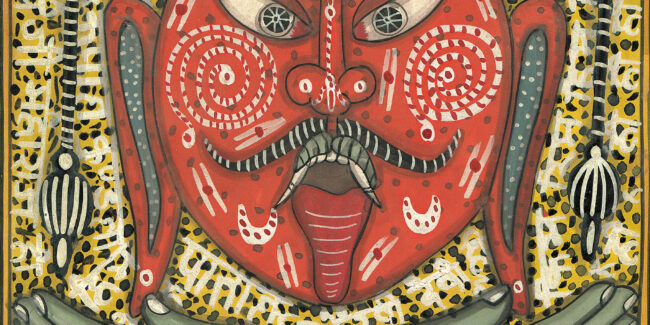
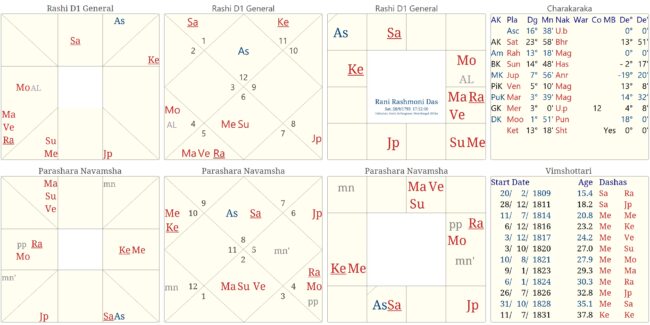

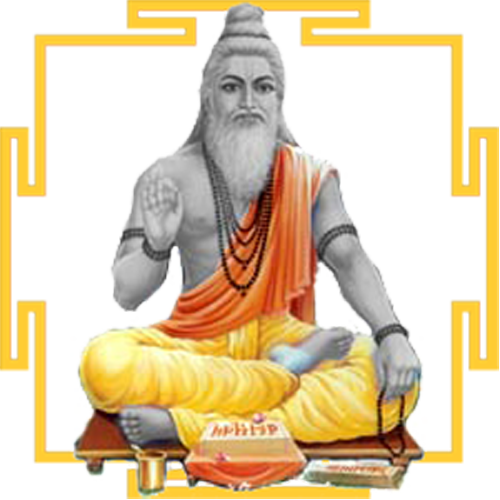 DBC offers online courses in jyotish (Vedic Astrology) taught directly by Sanjay Rath as per the tradition, through narrated power points and other audio tools. The courses are at different levels, from the beginners through the intermediate to the advanced and are known as SoHamsa | DBC courses, with individual classrooms and assistant teachers
DBC offers online courses in jyotish (Vedic Astrology) taught directly by Sanjay Rath as per the tradition, through narrated power points and other audio tools. The courses are at different levels, from the beginners through the intermediate to the advanced and are known as SoHamsa | DBC courses, with individual classrooms and assistant teachers
 Sagittarius Publications is the publisher and distributor the popular quaterly magazine the Jyotish Digest, as well as many thorough books on the subject of Vedic Astrology or Jyotish.
Sagittarius Publications is the publisher and distributor the popular quaterly magazine the Jyotish Digest, as well as many thorough books on the subject of Vedic Astrology or Jyotish.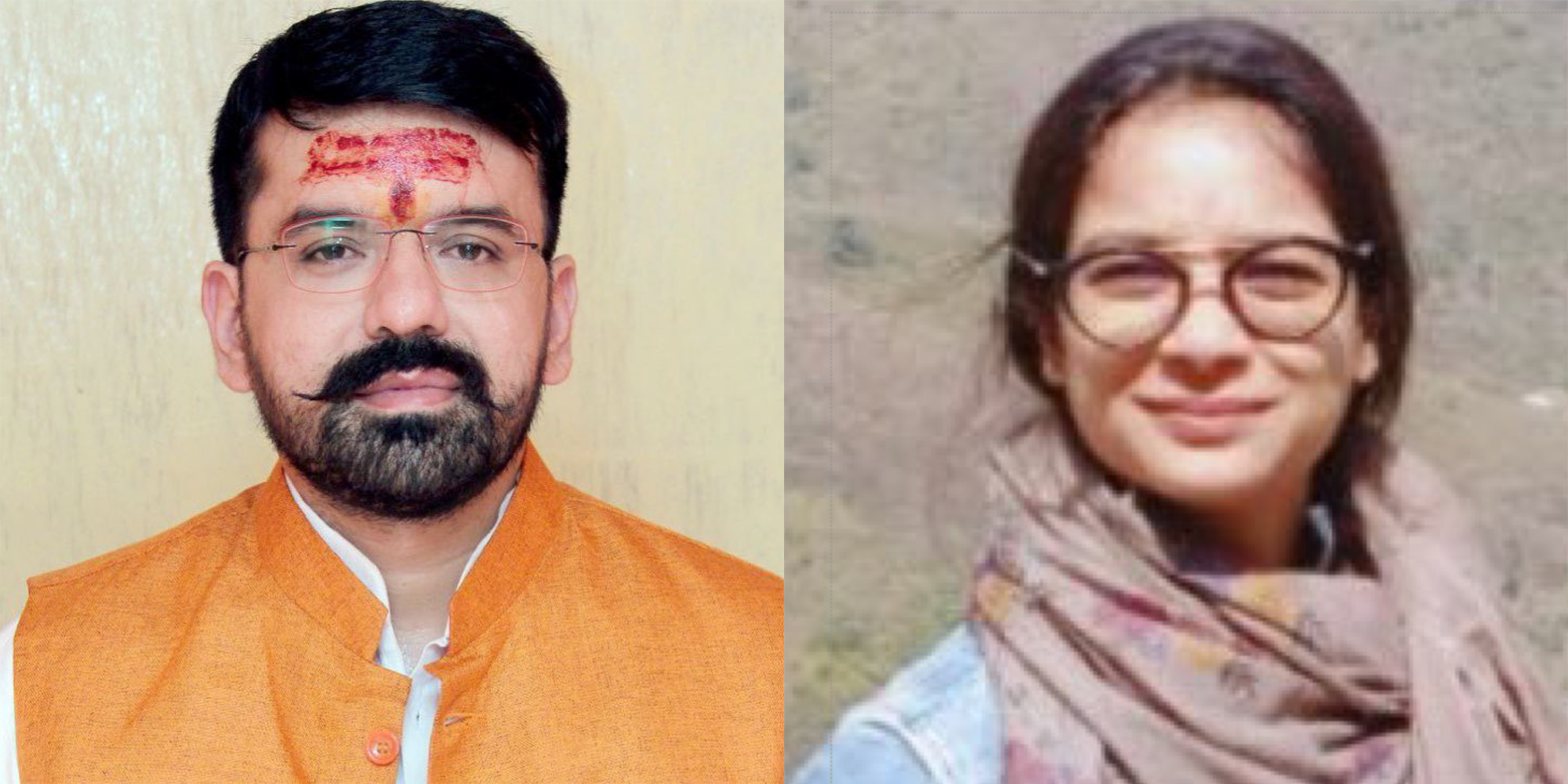 We have an excellent pandit Divākar ‘Deva’ Mishra, who is from the priests of Vindhyāvāsini Siddha Pīṭha to guide you through the hundreds of temples of Kāśi [Varanasi] and neighbouring regions. He can organise your pūjā, keep you safe and take care. He is supported by an English-speaking well-travelled spouse ‘Supriya Mishra’. Please contact them directly for any services, remedial pūjā and tours. They handled the 60+ member Kāśi Jyotiṣa Group 2022.
We have an excellent pandit Divākar ‘Deva’ Mishra, who is from the priests of Vindhyāvāsini Siddha Pīṭha to guide you through the hundreds of temples of Kāśi [Varanasi] and neighbouring regions. He can organise your pūjā, keep you safe and take care. He is supported by an English-speaking well-travelled spouse ‘Supriya Mishra’. Please contact them directly for any services, remedial pūjā and tours. They handled the 60+ member Kāśi Jyotiṣa Group 2022.